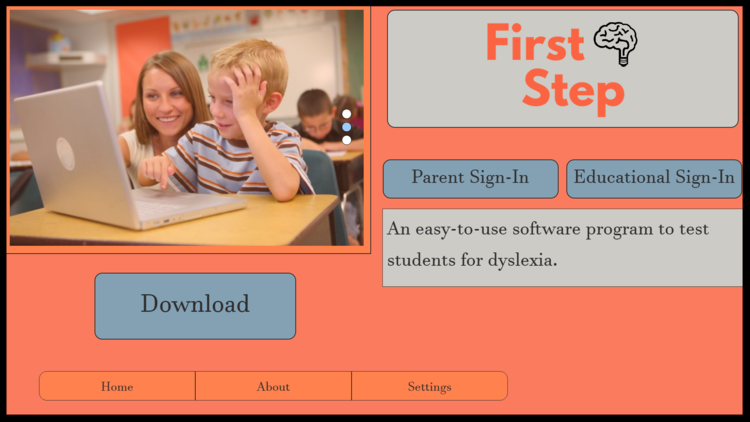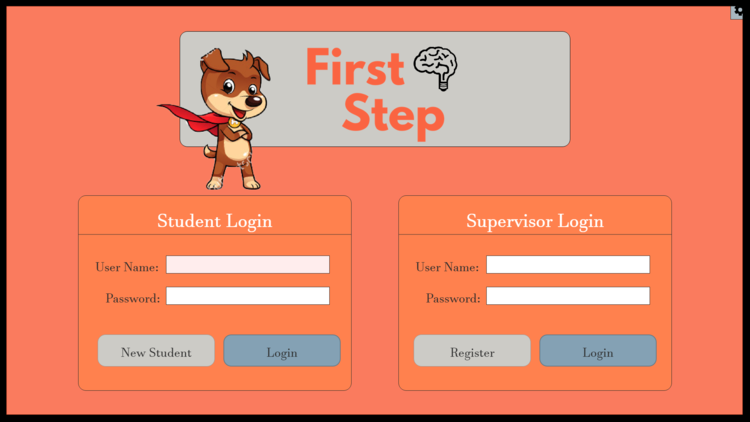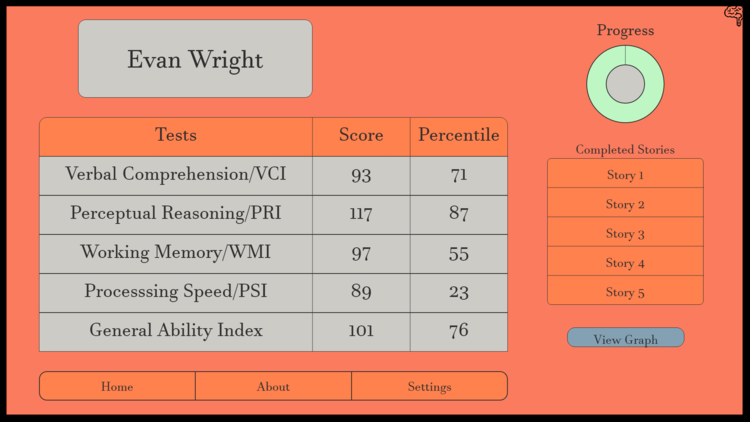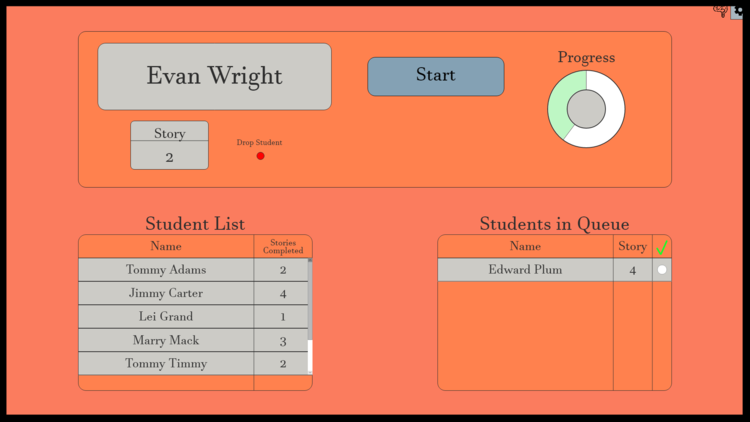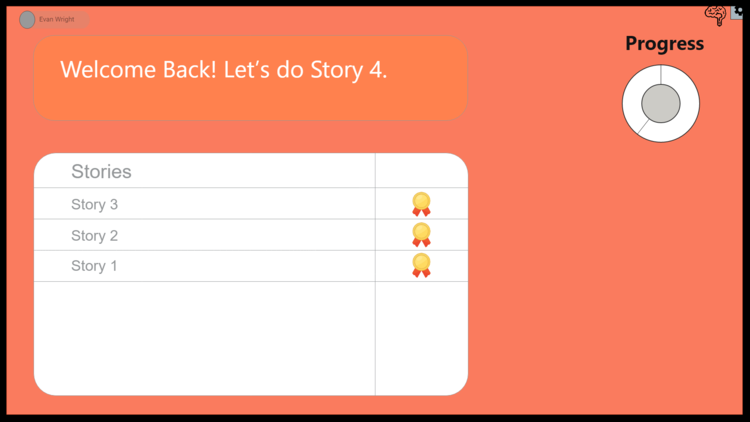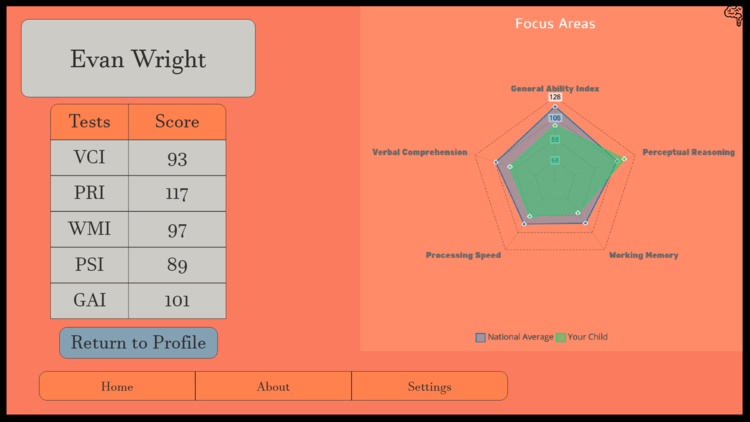
First Step

First Step
Jan 23, 2017 - MAr 8th, 2017
UNIVERSITY OF WASHINGTON - Info 200
what’s first step?
First Step is an application made to test children in schools for dyslexia and learning disabilities at a young age. First Step would be a computer test students would be required to take around the time they begin reading and writing. It would test the students reading fluency, comprehension and memory to determine the students overall strengths and weaknesses. It would then give the students information on whether they should pursue further evaluations from professionals and a proper diagnosis. First Step would then use the data collected to create an education plan that would be curated to the students strengths and weaknesses. This education plan will compliment teachers in the classroom and insure that students stay on track.
why first step?
According to Austin Learning Solutions, it is estimated that 1 in 10 people have dyslexia, and about 20% of school-aged children are dyslexic. Over 40 million American adults are dyslexic - and only 2 million know it because the problem is either overlooked or too expensive to treat. University of Michigan’s Center for Dyslexic help talks about some individuals not receiving the right treatment because they fail to recognize and diagnose the problem. Herein lie the statistics that give proof of dyslexia as a significant issue in the lives of many children and families in the country. So, when asked to create an information resource which connected people with information they needed, my group chose to assist dyslexic students.
The reason dyslexia presents an issue is not its widespread existence but the fact that millions of people go through life without receiving help. In a growing technological era, this problem group deserves a way to access resources online, allowing online resources to help detect the problem and pave an individualized study process with routine check-ups from therapists as well as parents. The common way to diagnose a proper treatment is by the use of exams. Not all schools implement a policy that requires all children to undergo screening leaving the initial diagnoses step to the teachers. For a teacher to successfully recognize a problem with the child’s learning ability, the teacher has to be trained to understand dyslexia. Therefore, training costs money that sometimes schools look at as a “futile cost.” Private testing is available but is usually long, spanning lasting anywhere from 3-4 hours for young children. A private source who underwent testing says it is extremely expensive, costing almost upwards of $1000, making it largely inaccessible.
how first step?

Dr. Elizabeth Smith
Connection to problem: Leads company KinderMinds (www.kinderminds.com), and holds Ph.D. in Learning Disabilities. Diagnoses dyslexic children.
Main take away: “Yes, it would be helpful to see information about student before going into the test, but I would unlikely change my approach during the test.”
Smith mentioned that the only way she tests children is if the parents go out of their way to contact her, she does not look for signs in children herself. The concept of a program diagnosing a student would not replace or change how she would diagnose a child. Rather it would be very useful to help her know what areas she could focus on when diagnosing a child first.
In order to attain required information, we relied on conventional research methods which include expert reviews and diary study. In order to attain expert reviews we conducted phone interviews with them. The interviews conducted included testimony from learning disability experts, parents, students and teachers. To the right is a profile for Dr. Elizabeth Smith, a Learning Disability specialist. This profile highlights remarks of note from our interview.
first step results?
How are you making sure that the scores you are collecting are kept safe?
Scores will not be seen from the teacher side, and cannot in any way be seen by the original sign in of (student name / student ID), which could be considered easy to access information.
When parents sign on to see the scores from the test, they will be given their own ID, and will create their own password only known to them.
If the school is given permission by the parent to see / use the results, there will be a private login for the school, that allows only the people stated in the written permission form to see the results(think who will decide this).
Do you think many people will want their child doing this, how do you deal with stigma around (diagnosing children disabilities)?
There are many benefits that we think will outweigh any of the disadvantages, like stigma. Firstly, this is a simple test that is looking for the major signs of dyslexia, not official diagnosis. The purpose of this is to see signs that would be much more difficult and time consuming for a person. It removes the hesitation of going to a professional with the risk of wasting money if there is no symptoms.
We think that almost all parents would jump to take this test for their child, since they care so much about their child and with the understanding of how much it can affect their child's learning future, they would want the test.
Q: How skilled will this supervisor have to be while entering information for kids responses? If it is high, there could be an issue with lack of skill / cost to pay.
Supervisor does not need to be very skilled at all.
For many tests such as the speaking test, they just need to know how the words should be pronounced, which could be considered simple for a grown adult. Other tests will not require the supervisor's input at all (ex: math test). And for the tests such as reviewing paragraphs, there will be a rubric given to the supervisor to follow easily.
